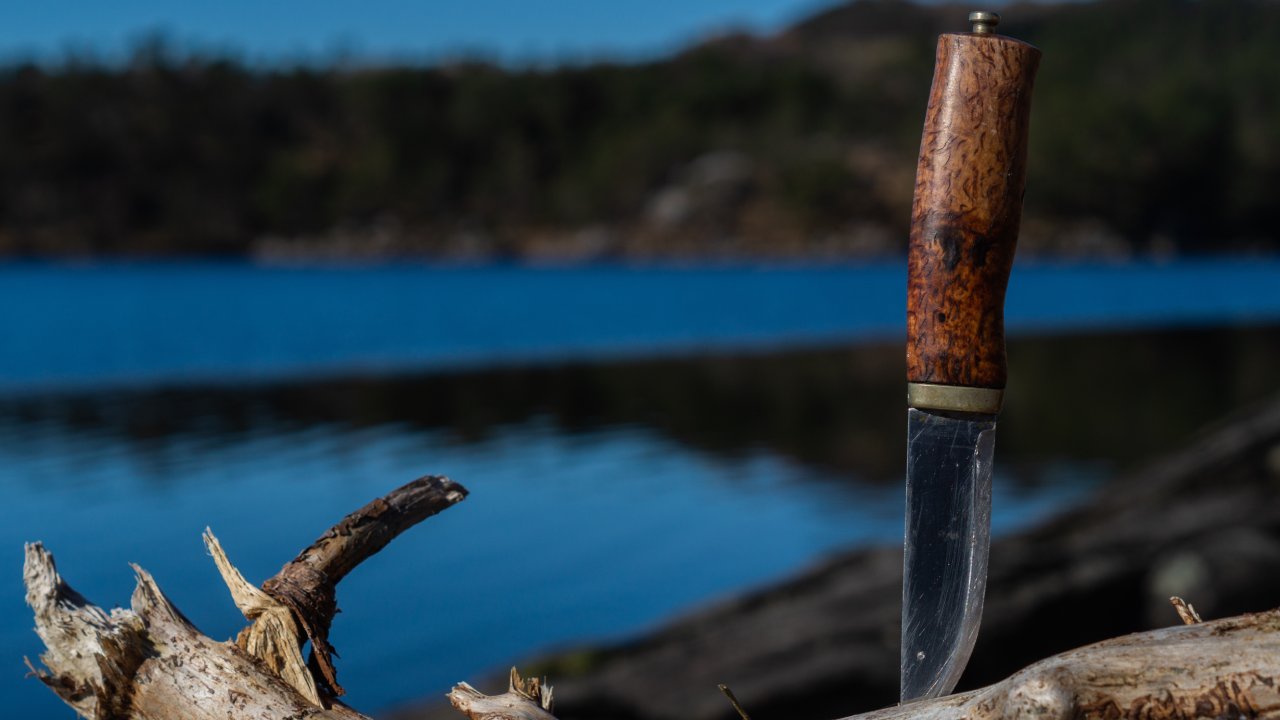Blade thickness might not be the first thing you consider when picking up a knife, but it’s a prime factor that influences the knife’s durability and longevity. For instance, thin blades are ideal for delicate tasks such as slicing food, while thicker ones can stand up to rugged environments. Let’s take a closer look at the effects of blade thickness on various types of knives.
Chef’s Knives and Precision Cutting
Capable of handling tasks such as chopping herbs and slicing meats, chef’s knives are versatile tools for kitchens. Their thin blades, often 2 to 3 millimeters thick, excel in precision. Their reduced drag allows accurate cuts, making them ideal for tasks requiring finesse. However, their slim profiles also make them more susceptible to wear and chipping, particularly if used for heavier tasks such as cutting through bone.
For example, Japanese-style knives such as Santoku are extremely sharp and crafted with very thin metal. Yet, because they use high-carbon steel, their edges requires regular maintenance to remain effective. Thinner chef’s knives are not recommended for heavy-duty chopping; thicker German-style blades might perform better here.
Survival Knives and Heavy Performance
Survival knives with thicker blades, typically 4 to 6 millimeters, are designed for heavy-duty tasks. Unlike thinner blades, they excel in harsh conditions, offering better durability for activities such as batoning or prying wood. Their sturdy construction reduces the risk of bending or breaking, making them ideal for tough environments.
For example, stainless steel is a popular example of a types of metal commonly used to make knives for outdoor settings. Stainless steel is resistant to rust, adding to the longevity of the blade. Although the increased thickness may slightly reduce slicing efficiency, it guarantees the blade won’t easily fail under pressure.
Everyday Carry Knives
Everyday carry (EDC) knives are all about balance. With blade thickness usually ranging between 2.5 and 4 millimeters, these knives are perfect for everyday tasks such as opening boxes or light cutting. This makes them sharp yet sturdy enough to handle minor rugged use when needed.
Take folding knives as an example. Made with thin but sturdy metals such as D2 tool steel, they’re compact and practical. They won’t endure heavy chopping like a survival blade, but their thickness allows them to hold up for repeated daily use. These knives demonstrate the fine line between efficiency and durability by balancing moderate thickness with reliable construction.
Finding the Right Blade for Your Needs
Understanding how blade thickness influences durability and longevity is essential when you’re selecting a knife. Thinner blades are perfect for jobs requiring precision, but they might falter under high stress. Thicker blades will endure the pressures of demanding tasks, but they lose some slicing efficiency.
When you’re considering the best knife for your needs, always weigh the trade-offs. Whether it’s carbon steel for sharpness or stainless steel for strength, choosing the right metal paired with the appropriate thickness could mean the difference between a lasting tool and one that falls short in critical moments.

